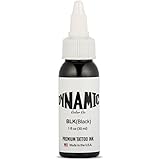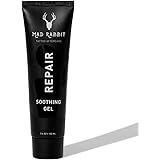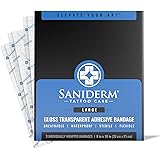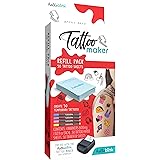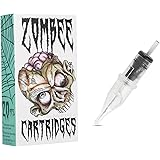A staggering seven distinct hand lettering styles, specifically curated for beginners, are introduced in the accompanying video. For those feeling a repetitive strain in their creative process or seeking fresh inspiration, these foundational techniques offer an immediate pathway to diversify one’s artistic repertoire. It is frequently observed that individuals new to hand lettering often feel overwhelmed by the sheer volume of styles available; however, by mastering just a few versatile options, a significant improvement in overall lettering quality can be achieved. This guide is designed to complement the video’s visual instruction, providing expanded insights, practical tips, and a deeper dive into each of these accessible styles, ensuring a solid foundation for any aspiring hand letterer.
Mastering Foundational Hand Lettering Styles for Beginners
The journey into hand lettering is often made more enjoyable and less daunting when a structured approach is followed. The seven styles presented here have been thoughtfully selected for their beginner-friendliness and their capacity to be combined or used independently. Each style, when properly understood and practiced, contributes to a versatile skill set. A comprehensive guide for practicing these techniques, complete with unique projects for each style, is also offered through an upcoming book set to release on February 2nd. This release is planned to coincide with a special community event where user requests for lettered words will be fulfilled, creating a shared experience for lettering enthusiasts.
1. The Monoline Script: Simple Elegance Achieved
Firstly, the monoline script is widely regarded as an excellent starting point for any beginner in hand lettering. Its characteristic uniform thickness across all strokes simplifies the learning process, as no pressure variation is required. This style allows practitioners to focus solely on letterforms, spacing, and consistency.
- Key Characteristics: All lines are of equal weight, presenting a clean and understated aesthetic. It is inherently readable and can be adapted to many uses.
- Recommended Pens: While any pen can be utilized for monoline script, pens like the Monami Plus 3000 are often favored. These specific pens are known for their smooth ink flow and fine tips, which assist in maintaining consistent line thickness.
- Best Use Cases: This style is perfectly suited for everyday notes, minimalist design projects, adding captions, or serving as a foundational element when combined with more elaborate script styles. It is frequently seen in bullet journaling for its clarity.
- Beginner Tips: Emphasis should be placed on slow, deliberate strokes. Consistent letter height and spacing are crucial for a polished look. Practicing basic strokes and letter connections repeatedly is highly recommended.
2. Flourished Script: Adding Whimsical Flair
Next, for those wishing to inject a touch of whimsy and elegance, the flourished script provides an opportunity to explore decorative elements. This style is identified by its flowing, looping lines and embellishments that extend from the letters themselves.
- Key Characteristics: Characterized by its more elaborate and decorative nature, flourished script incorporates loops and flourishes that can add a charming flair. It tends to be more “loopy” than other script styles.
- Recommended Pens: Pentel Touch brush pens are excellent companions for this style. Their flexible brush tips allow for varying line widths, which are essential for creating the delicate thick and thin strokes inherent in flourished designs.
- Best Use Cases: Flourished script is typically reserved for stand-alone words, short quotes, invitations, or headings where an element of sophistication is desired. It is important that readability is maintained despite the embellishments.
- Beginner Tips: Moderation is key with flourishes; overdoing them can make the lettering difficult to read. Initial practice should involve basic flourish shapes and their integration with simple letterforms before attempting complex designs. A light hand for upstrokes and slightly more pressure for downstrokes is generally advised.
3. Chunky Faux Calligraphy: Boldness and Blending
The third style, chunky faux calligraphy, is a fantastic technique for achieving a bold, impactful look without requiring specialized calligraphy skills. It is particularly beloved for the creative possibilities it offers with internal coloring and blending.
- Key Characteristics: This style creates the illusion of traditional calligraphy by outlining and filling in thicker downstrokes. The “chunky” nature allows for a substantial area within each letter, which is perfect for adding color.
- Recommended Pens: The bullet tip side of Tombow Dual Brush Pens is highly effective for this style. The firm, consistent tip allows for precise outlining, while the generous ink capacity of these pens makes them ideal for seamless color blending within the filled areas.
- Best Use Cases: Chunky faux calligraphy is a go-to for galaxy lettering, rainbow lettering, or any instance where a word needs to truly stand out. It is commonly used for titles, posters, and emphatic statements.
- Beginner Tips: The process involves writing a word in a simple script, identifying the natural downstrokes, drawing a parallel line to thicken these downstrokes, and then coloring the space between the lines. Experimenting with different color gradients within the letters can yield stunning results.
4. The Essential Print Style: Versatility in Form
An often-underestimated but incredibly vital hand lettering style is the basic print style. Its importance lies in its ability to complement more decorative scripts and provide balance within a design.
- Key Characteristics: Print style is characterized by its non-scripted, individual letterforms, offering high readability and a clean appearance. It serves as an anchor for more fluid styles. Thick versions can also be used for blending effects.
- Recommended Pens: Marvy Le Pen Flex pens are highlighted for their small brush tips, which provide excellent control for precise print lettering. While the color range may lean towards earthy tones, the quality of the nib for consistent lines is highly regarded.
- Best Use Cases: This style is essential for creating sub-headings, body text, or any element requiring clear, uncluttered information. It is often paired with script lettering to create contrast and hierarchy in a design.
- Beginner Tips: Focus on maintaining consistent letter height, width, and spacing. Practicing different weights (thin, regular, bold) can expand its versatility. Creating a thicker version by outlining and filling, similar to faux calligraphy, opens doors for color blending in a different context.
5. Elegant Script: Bouncy and Flowy Grace
The elegant script is recognized for its graceful movement and adaptable nature, making it a “go-to” style for many letterers. Its inherent bounce and flow contribute to a classy and inviting aesthetic.
- Key Characteristics: This script exhibits a bouncy, flowy quality, where letters are connected with a gentle, undulating rhythm rather than a strict baseline. It embodies elegance and versatility, suiting numerous applications.
- Recommended Pens: Faber-Castell Pitt Artist brush pens are a strong recommendation here. Their range of sizes allows for this style to be executed with both larger, chunkier forms and smaller, more delicate expressions, making them highly adaptable tools.
- Best Use Cases: Ideal for cards, sophisticated quotes, personal branding, or any project that benefits from a touch of refined charm. Its adaptability means it can be scaled up or down depending on the desired visual impact.
- Beginner Tips: Practicing the connection points between letters is crucial for maintaining the flow. Experimenting with slight variations in baseline and letter height will help achieve the characteristic “bounciness” without sacrificing readability.
6. Brush Pen Faux Calligraphy: Modern Shadows and Stripes
The sixth style, brush pen faux calligraphy, offers a contemporary twist on adding depth and visual interest to lettering. It creates an effect reminiscent of shadows or stripes, giving a modern edge to simpler letterforms.
- Key Characteristics: This technique involves adding an additional line or “stripe” alongside a basic letterform, typically on the downstrokes or one side, to create a dimensional or shadowed appearance. The base often consists of relatively straight lines, emphasizing the added stripe.
- Recommended Pens: Tombow Fudenosuke brush pens, particularly those with a firm tip, are exceptionally well-suited for this style. Their firm tip allows for the creation of very thin, precise lines, which are essential for the stripe effect. An added benefit of these pens is their waterproof ink, offering more layering possibilities with other mediums.
- Best Use Cases: This style is perfect for bullet journaling, planners, headlines, or any design where a subtle yet impactful dimensional quality is desired. It lends a clean, modern aesthetic to a variety of projects.
- Beginner Tips: Consistency in the placement and thickness of the “stripe” is paramount. Practicing straight lines and maintaining even spacing between the main letter stroke and the shadow stroke will lead to a clean and professional finish.
7. The Most Basic Style: Your Starting Point
Finally, the most basic hand lettering style serves as the absolute foundation for all other techniques. It is the bedrock upon which all subsequent skills are built, and mastery of this fundamental approach cannot be overstated.
- Key Characteristics: This style focuses on the absolute basics of letterform construction, consistent stroke direction, and fundamental pressure control (even if it’s just maintaining consistent pressure for monoline). It’s about building muscle memory and understanding the components of each letter.
- Recommended Pens: While specific pens are not strictly necessary for this foundational practice, any comfortable writing tool such as a pencil, a fineliner, or a basic pen can be used. The focus here is on technique rather than tool specifics.
- Best Use Cases: This style is exclusively for foundational practice. It is where uppercase and lowercase letters are meticulously practiced, and the core principles of small and large brush pen control are developed.
- Beginner Tips: Dedicate significant time to drilling basic strokes—upstrokes, downstrokes, ovals, and compounds. Understanding the thick and thin principle (even if not applying pressure yet) is vital. Repetition is the key to developing the muscle memory and control required for all advanced hand lettering styles.
Beyond the Styles: Tools and Techniques for Your Hand Lettering Journey
While exploring the seven core hand lettering styles, it is equally important to understand the broader context of tools and general techniques that can elevate one’s practice. The choice of pens, for instance, dramatically influences the outcome of any lettering project.
Brush pens, commonly featured in the video, come in varying degrees of tip firmness and flexibility. Firm-tipped pens, like the Tombow Fudenosuke, offer greater control for smaller, more precise strokes and are often recommended for beginners learning pressure control. Softer-tipped pens, such as the Pentel Touch, allow for more dramatic thick and thin variations but require more practice to control. Bullet-tip pens, like the Tombow Dual Brush Pens’ fine side, provide consistent lines, which are ideal for monoline styles and outlining for faux calligraphy.
Beyond pens, the surface used for lettering significantly impacts the experience. Smooth paper, such as Bristol board or Rhodia pads, helps preserve delicate brush pen tips and allows for a cleaner ink application. Practicing on appropriate paper can prevent fraying of pen tips and ensure the longevity of your tools.
Techniques such as blending, as mentioned with chunky faux calligraphy, can be expanded upon. This involves layering different colored inks while they are still wet to create smooth transitions, or using a colorless blender pen to pull color from a darker marker. Understanding color theory and how different hues interact is an added dimension to master.
Elevating Your Practice: Engaging with the Hand Lettering Community
The journey of learning new hand lettering styles is often enriched by community engagement. The announcement in the video about lettering viewer requests is a prime example of how connecting with other enthusiasts can foster inspiration and growth. Sharing one’s work, receiving feedback, and observing the creative processes of others are invaluable aspects of artistic development.
Participating in such events not only provides an opportunity to see how different words are approached in various styles but also builds a sense of camaraderie among budding artists. This interactive approach can demystify complex letter combinations and showcase the versatility of each style in real-time application. Furthermore, the upcoming book, launching on February 2nd, promises to be a comprehensive resource, offering detailed tutorials and projects that specifically apply these styles. It serves as a practical companion for those who wish to delve deeper into each technique and solidify their understanding through guided practice.
Embracing these seven fundamental hand lettering styles can truly transform a beginner’s creative confidence. The journey of mastering these techniques, from the elegant simplicity of monoline script to the foundational basic style, is a rewarding one that unlocks endless possibilities for personal expression. Remember, consistent practice with the right tools and guidance is the key to developing beautiful and versatile hand lettering skills.


